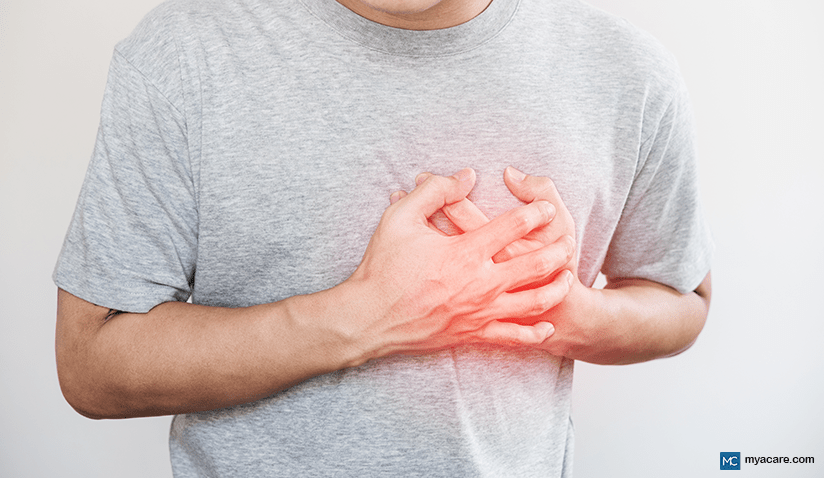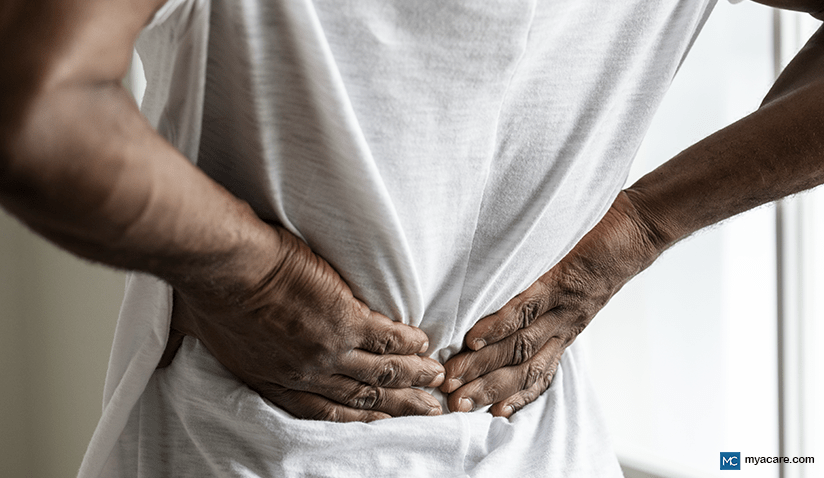DYSMENORRHEA: PERIOD PAIN CAUSES, MANAGEMENT & WHEN TO SEE A DOCTOR

Period pain that arises from menstrual cramps each month is known as dysmenorrhea. Although menstrual pain is a relatively normal occurrence amongst the majority of women, heightened levels of pain, pain in unusual areas and pain that increases alongside the severity of menstrual symptoms over time are potentially problematic signs. Chronic debilitating dysmenorrhea is associated with a number of reproductive health concerns and conditions, and is often ignored until it is too late.
The below discussion takes a look at what is currently known about dysmenorrhea; why period cramps occur, what is considered normal for a period and when period pain might suggest a health issue. Tips for managing period pain are also included, as are warning signs and when one ought to seek out professional help.
Types of Dysmenorrhea
Dysmenorrhea is divided into primary and secondary types. Primary dysmenorrhea is menstrual pain associated with cramping in the absence of reproductive disease. Secondary dysmenorrhea is pain that occurs as a result of disease.
Primary Dysmenorrhea
Not all women experience primary dysmenorrhea as a feature of their menses each month. According to statistics, teenage girls don’t experience any primary dysmenorrhea until having regular menses for a minimum of two years on average. If pain occurs, it is usually worse for younger women and tends to get less intense by the time a woman hits her 30’s. Some perhaps very fortunate women never experience period pain at all.
Symptoms
Aside from the obvious painful abdominal cramps, primary dysmenorrhea can be accompanied by the following symptoms:
- Headaches
- Diarrhea
- Nausea or vomiting
- Pain in the pelvis, lower back or thighs
- Slight unsteadiness or clumsiness
- Sweating
Primary dysmenorrhea can usually be managed through dietary and lifestyle modifications or through the use of pain killers. If the condition persists in spite of proper management, then it may be a sign of secondary dysmenorrhea.
Causes
The cause of abdominal cramping and heightened pain during menstruation is not actually officially known yet. In any event, a few factors have been implicated in potentially causing dysmenorrhea, such as hormonal fluctuations, prostaglandins, inflammation and the state of the vaginal microbiome.
1. Prostaglandins and Pain
At the beginning of menstruation, levels of both progesterone and estrogen decline, while prostaglandin levels are increased relative to these hormones. Prostaglandins are chemical messengers that tend to trigger an inflammatory response in the body. Sex hormones tend to have an inhibitory effect on the action of prostaglandins and thus when levels decline just before menstruation, it coincides with an increase in inflammation that induces a breakdown of the endometrium. Contractions within the uterus also facilitate this process by constricting blood vessels and depriving the endometrium of oxygen.[1] Prostaglandins can increase the sensation of pain in a dose-dependent manner, and may be partially responsible for inducing uterine contractions.
Prostaglandins cover a broad class of molecules and it has been shown that two specific prostaglandins are associated with dysmenorrhea in particular – prostaglandin E2 (PGE2) and prostaglandin F2-alpha (PGF2a). Data shows that women tend to get the same levels of prostaglandins 1-3 days before menstruation, however those that experience period pain tend to have elevated prostaglandins beyond that point.
The data regarding dysmenorrhea is not conclusive and sometimes shows mixed results, with a common trend for excessive prostaglandins and inflammation. Excessive prostaglandin production in dysmenorrhea is linked to elevated estradiol levels relative to estrone and other sex hormones.[2]
Other studies show that heightened levels of the hormone vasopressin can contribute towards PMS (symptoms leading up to menses), while other studies shown that both vasopressin and prostaglandins create dysmenorrhea.[3] The period pain subsides when prostaglandin levels decline, which is coupled with less inflammation and less immune system infiltration in the uterus. Naturally, the state of the immune system in this context can also contribute towards painful menstruation.
2. Inflammation
During the menstrual cycle, the immune system responds to the changing levels of sex hormones and becomes more or less inflammatory, depending on what phase the cycle is in. In menstruation, inflammatory genes are naturally upregulated and the immune system engages in more inflammatory activity. Those with dysmenorrhea had higher inflammation than women that experienced no pain and lower levels of anti-inflammatory signaling, which directly contributed towards increased menstrual pain.[4]
3. Vasopressin and Water Retention
Vasopressin is also known as antidiuretic hormone and is released in order to control fluid volume in the body. Levels of vasopressin are increased in women during the luteal phase which precedes menstruation. This causes more water bodily retention, which reaches a maximum before and during the first few days of menstruation. This is a response to ensure that blood volume is conserved during a time of blood loss. Women with higher vasopressin levels tended to experience more dysmenorrhea and PMS on average. Holding too much water in response to high vasopressin levels can also cause increased vasoconstriction, which could contribute towards headaches, more abdominal pain, cramping and a slower elimination of prostaglandins and other inflammatory molecules from the body. Vasopression has also been associated with increased hostility, anger and possessive mating behaviors in animal studies; possibly revealing a role for the hormone in the irritation associated with PMS.
On the plus side, oxytocin has similar antidiuretic properties to that of vasopressin[5] with the exception of being associated with positive emotional states of being, such as kindness, love, gratitude, trust, empathy and compassion. Oxytocin and vasopressin release are regulated by estrogen levels and the activation of the estrogen beta receptor. [6]
4. The Female Reproductive Microbiome and Immune Function
Just like the gut, the vaginal canal houses a microbiome of its own. While this field is still in its infancy, there have been a few experimental connections linking reproductive microbial disturbances, inflammation, increased pelvic pain and dysmenorrhea.
Fluctuations in bacterial diversity have been shown to occur during menstruation, with sex hormones appearing to contribute towards a more stable ecology during all other phases of the cycle. Under a microscope, estrogen was shown to promote much better adhesion of common vaginal probiotic lactobacillus species to the walls of skin cells found in the reproductive tract. During menstruation, estrogen levels decline, causing the bacteria along with the endometrial lining to degrade and leave the body. In this way, the ecosystem of the reproductive tract is cleansed once a month and builds slowly back up again through the course of the cycle.
Preliminary evidence suggests that lots of organisms come and go during menstruation, potentially increasing irritation, sensitivity and pain in the area. However in most healthy cases, this fluctuation returns back to a normal ecology in the presence of estrogen (after menstruation) without much deviation. It should be mentioned that not much is known about what specific lactobacillus strains are associated with health in the female microbiome yet. The first data indicates that while lactobacillus dominates a healthy female reproductive tract and other organisms are associated with infections; each female seems to have a very unique microbial configuration.
Vaginal infections can alter the way in which the immune system functions during menstruation, particularly when there is a decline of sex hormones, and create heightened levels of pain and inflammation.
Secondary Dysmenorrhea
Secondary dysmenorrhea is indicative of a reproductive abnormality or disease state which contributes towards creating a severe form of menorrhea that persists or gets worse through time.
Symptoms
Secondary dysmenorrhea includes all the symptoms of primary dysmenorrhea, however the symptoms are far more intense. Women with secondary dysmenorrhea are often unable to do much during their menses due to the severity of pain.
If you suffer from debilitating pain during menstruation, especially if accompanied by other unusual symptoms, do not hesitate to seek out professional help about the matter. While mild menstrual pain is normal, excessive amounts are not.
Causes
This form of period pain is derived usually from a cyst or excessive endometrial growth that makes uterine contractions more challenging and painful[7]. Other conditions can also cause secondary dysmenorrhea, including adenomyosis, pelvic inflammatory disease, and cervical stenosis.
Invariably, many reproductive conditions that induce secondary dysmenorrhea are associated with severe hormonal disturbances, metabolic issues and immune dysfunction, typically displaying an inflammatory phenotype. Pain can be much more extreme in secondary dysmenorrhea, not only because of more inflammation being present, but also because of nervous system alterations that increase pain sensitivity.
Dysmenorrhea Risk Factors
Risk factors that predispose one to experiencing increased period pain include[8]:
- Heavy menstrual bleeding
- Early age of menarche onset
- Long menstrual periods
- Smoking
- Anemia
- Familial history
- High stress levels
When is Period Pain Too Much?
Dysmenorrhea is a normal occurrence from time to time in most women, however it is usually mild and should not detract from one’s ability to carry out normal, non-rigorous activities. Roughly about 10% of women have dysmenorrhea severe enough to cause them to lose 1-3 days of work or school each month[9]. This is not necessarily an indication of disease. Certain factors can temporarily influence hormonal stability and induce heavier bleeding accompanied by worse cramps. Common ones include chronic stressors, such as trauma, divorce or grief.
Nevertheless, any persistent irregularity could indicate the development of a health condition and deserves medical attention; especially when the cause is unknown and especially when management of the pain is not effective. At any point at which menstrual symptoms are not and have not been manageable for a few months, you ought to consult with a doctor about it. If cramping and period pain tends to last longer than 2-3 days while having a period or abdominal pain resembling period pain is present at other times of the cycle, then you need to see a physician.
5 Tips for Managing Period Pain
The following tips may help for pain management and prevention for those with primary dysmenorrhea.
1. Pain Killers
One of the mainstay treatments for managing period pain are non-steroidal anti-inflammatory drugs or NSAIDs. The way in which these drugs work is by blocking the cellular pathways that are responsible for generating prostaglandins, specifically cyclooxygenase (COX) 1 and 2. However, using NSAIDs, especially chronic use, is associated with gut issues and quite a few women are non-responsive to them. Research also indicates that women with dysmenorrhea may respond better to COX-2 inhibitors alone than both together.[10]
Natural alternatives exist that block COX-2 and may reduce menstrual pain with little to no side effects. These include polyphenol-rich foods[11] such as herbs, teas, spices[12], and berries[13]. Polyphenols are plant-based chemical compounds that give food flavor, color, and many beneficial properties[14]. Of these foods, olive oil[15], all dark-colored berries like blueberry and pomegranate, clove[16] and ginger are especially high in polyphenols that inhibit COX-2. In this respect, consuming moderate amounts of polyphenol-rich foods in the week leading up to and during menstruation may help to lower period pain.
2. Hormone Support
Another treatment option for those with moderately severe dysmenorrhea includes hormone regulation and support. This is often achieved through use of the contraceptive pill, which makes use of synthetic hormones in order to take complete control of the menstrual cycle. Women with dysmenorrhea that are non-responsive to NSAIDs sometimes have relief from taking the pill instead. The contraceptive pill is associated with lighter bleeding and a reduction in the severity of other symptoms; however this is not the case with all women and in some, PMS is made worse through using the pill.
Natural hormonal support options are not as effective as synthetic ones like the pill. However, moderately consuming foods that contain decent levels of phytoestrogens may help to regulate feminine hormonal health and lower symptoms of dysmenorrhea. Phytoestrogens are plant-based chemical compounds that mimic the effects of estrogen in the body and activate estrogen receptors[17].
Activation of estrogen-beta receptors may specifically be helpful in the case of dysmenorrhea. Experimental evidence in test-tubes and mice suggests that it’s activation can inhibit COX-2, prostaglandin production[18], help regulate the female reproductive cycle[19], moderate increased estradiol and vasopressin levels, as well as up-regulate oxytocin[20].
Not all phytoestrogens are associated with health benefits and some are known to cause hormone disruption over time. One example includes the metabolites of soy phytoestrogen, daidzen, which completely inhibits the activity of estrogen receptors[21] (an effect that is partially ameliorated in the guts of those with bacteria to metabolize daidzen[22]). Lignans are a class of phytoestrogens that are present in high-fiber foods such as berries, fruits and seeds, the highest amounts of which are seen in flax and sesame seeds. Flax seeds have been shown to maintain regular menstrual cycles as a result of it’s hormonal actions[23]. Foods rich in lignans are also associated with a lesser prevalence of dysmenorrhea and an overall healthier diet.
In spite of these experimental observations, the effects are still not as potent as synthetic hormone therapies; yet as with painkillers, there are very few side effects to consuming foods rich in lignans.
3. Gentle Exercise and Heat
Studies indicate that those with primary dysmenorrhea who do not benefit from painkillers can often find relief with some gentle exercise and/or keeping a warm stable temperature.[24] While exercise may seem counterintuitive during one’s menses, it would seem that the combination of increasing core temperature, loosening stiff joints, breathing more deeply and getting one’s fluids to circulate more effectively can help to lower the intensity of cramps and pain.
As with all of these tips, not all women find exercise helps. Of the females that find benefit in exercise during menstruation, some prefer rigorous exercise while others prefer gentler forms such as yoga and tai-chi. Gentler exercise is recommended as over-doing it can increase bodily inflammation, create unnecessary physical stress and result in other kinds of pain[25].
If exercise is difficult or shows no benefit, then keeping a stable temperature may be of use. Taking hot baths (especially with Epson salt) or using a hot water bottle are common remedies for menstrual cramps that have been shown to be more effective than doing nothing.
4. Stay Calm and Breathe
While no specific data has emerged relating deep breathing to lowering symptoms of dysmenorrhea, there is evidence that suggests it may help with managing pain perception[26]. Deep breathing exercises in which the lungs are completely filled and emptied with each respective inhalation and exhalation; may help to slow the heart rate, reduce stress[27], and lower inflammation[28]. This breathing pattern essentially mimics states of deep rest, such as seen in sleep, meditation and hibernation.
Cultivating mindfulness, kindness and/or meditating have also been shown to lower inflammatory immune activity and increase activity within the oxytocin system. These observations correlated with improvements in emotional control. In other words, combining kindness-oriented mindfulness with deep breathing can have better results than one or the other alone. [29]
5. Be Kind to Your Gut
The gut microbiome has undergone extensive research in the last couple of decades. Research has revealed that nutrients and their metabolism by specific bacterial strains modulate immune function[30] and that the state of the gut microbiome has an impact on just about every organ in the body. The gut microbiome has been shown to exert a beneficial stabilizing action on sex hormones[31] when kept in balance and dysmenorrhea is often seen in those with digestive disorders where gut inflammation is chronically elevated[32] [33].
Consuming a diet high in vitamins and minerals from fresh fruit and vegetables, as well as moderate amounts of fish, whole milk and dairy products, was associated with less menstrual pain[34] and independently associated with improved gut and overall health. Overly processed foods, under-eating (or skipping out on meals) and severe weight loss diets are associated with worse menstrual symptoms.
Conclusion
Some period pain is normal from time to time, especially if you’re under the age of 20. Hormonal status and immune function tend to dictate the severity of painful menstrual cramping. Through appropriate medications, self-care practices, healthy lifestyle choices, adequate nutrition and dietary modifications, most period pain can be effectively managed and in some cases, entirely prevented.
Excessive pain that results in being unable to work or go to school and pain that can’t be managed are unusual and could require medical attention. If your symptoms are non-responsive to general treatment or lifestyle modifications, consider having your reproductive health examined by a healthcare practitioner.
To search for the best Endocrinology healthcare providers in Germany, India, Malaysia, Spain, Thailand, Ukraine, the UAE, the UK and the USA, please use the Mya Care search engine.
Sources:
- [1] https://pubmed.ncbi.nlm.nih.gov/7001019/
- [2] https://pubmed.ncbi.nlm.nih.gov/6596911/
- [3] https://www.ncbi.nlm.nih.gov/pmc/articles/PMC7068519/
- [4] https://www.ncbi.nlm.nih.gov/pmc/articles/PMC3563666/
- [5] https://pubmed.ncbi.nlm.nih.gov/15280526/
- [6] https://www.ncbi.nlm.nih.gov/pmc/articles/PMC2274006/
- [7] https://www.ncbi.nlm.nih.gov/pmc/articles/PMC5585876/
- [8] https://pubmed.ncbi.nlm.nih.gov/26841639/
- [9] https://www.ncbi.nlm.nih.gov/books/NBK279324/
- [10] https://pubmed.ncbi.nlm.nih.gov/15050982/
- [11] https://pubmed.ncbi.nlm.nih.gov/29068698/
- [12] https://www.ncbi.nlm.nih.gov/pmc/articles/PMC4177637/
- [13] https://pubmed.ncbi.nlm.nih.gov/11695879/
- [14] https://www.ncbi.nlm.nih.gov/pmc/articles/PMC2562783/
- [15] https://www.ncbi.nlm.nih.gov/pmc/articles/PMC7599558/
- [16] https://pubmed.ncbi.nlm.nih.gov/21299140/
- [17] https://pubmed.ncbi.nlm.nih.gov/16118406/
- [18] https://pubmed.ncbi.nlm.nih.gov/19318151/
- [19] https://pubmed.ncbi.nlm.nih.gov/15831568/
- [20] https://pubmed.ncbi.nlm.nih.gov/12531518/
- [21] https://pubmed.ncbi.nlm.nih.gov/15084758/
- [22] https://www.ncbi.nlm.nih.gov/pmc/articles/PMC5535874/
- [23] https://pubmed.ncbi.nlm.nih.gov/8077314/
- [24] https://www.ncbi.nlm.nih.gov/pmc/articles/PMC6337810/
- [25] https://www.ncbi.nlm.nih.gov/pmc/articles/PMC6962351/
- [26] https://pubmed.ncbi.nlm.nih.gov/21939499/
- [27] https://www.ncbi.nlm.nih.gov/pmc/articles/PMC5455070/
- [28] https://pubmed.ncbi.nlm.nih.gov/27538513/
- [29] https://www.ncbi.nlm.nih.gov/pmc/articles/PMC4325657/
- [30] https://www.ncbi.nlm.nih.gov/pmc/articles/PMC4056765/
- [31] https://www.ncbi.nlm.nih.gov/pmc/articles/PMC5625026/
- [32] https://www.ncbi.nlm.nih.gov/pmc/articles/PMC3813001/
- [33] https://pubmed.ncbi.nlm.nih.gov/9746678/
- [34] https://www.karger.com/Article/Fulltext/495408
Disclaimer: Please note that Mya Care does not provide medical advice, diagnosis, or treatment. The information provided is not intended to replace the care or advice of a qualified health care professional. The views expressed are personal views of the author and do not necessarily reflect the opinion of Mya Care. Always consult your doctor for all diagnoses, treatments, and cures for any diseases or conditions, as well as before changing your health care regimen. Do not reproduce, copy, reformat, publish, distribute, upload, post, transmit, transfer in any manner or sell any of the materials in this blog without prior written permission from myacare.com.



